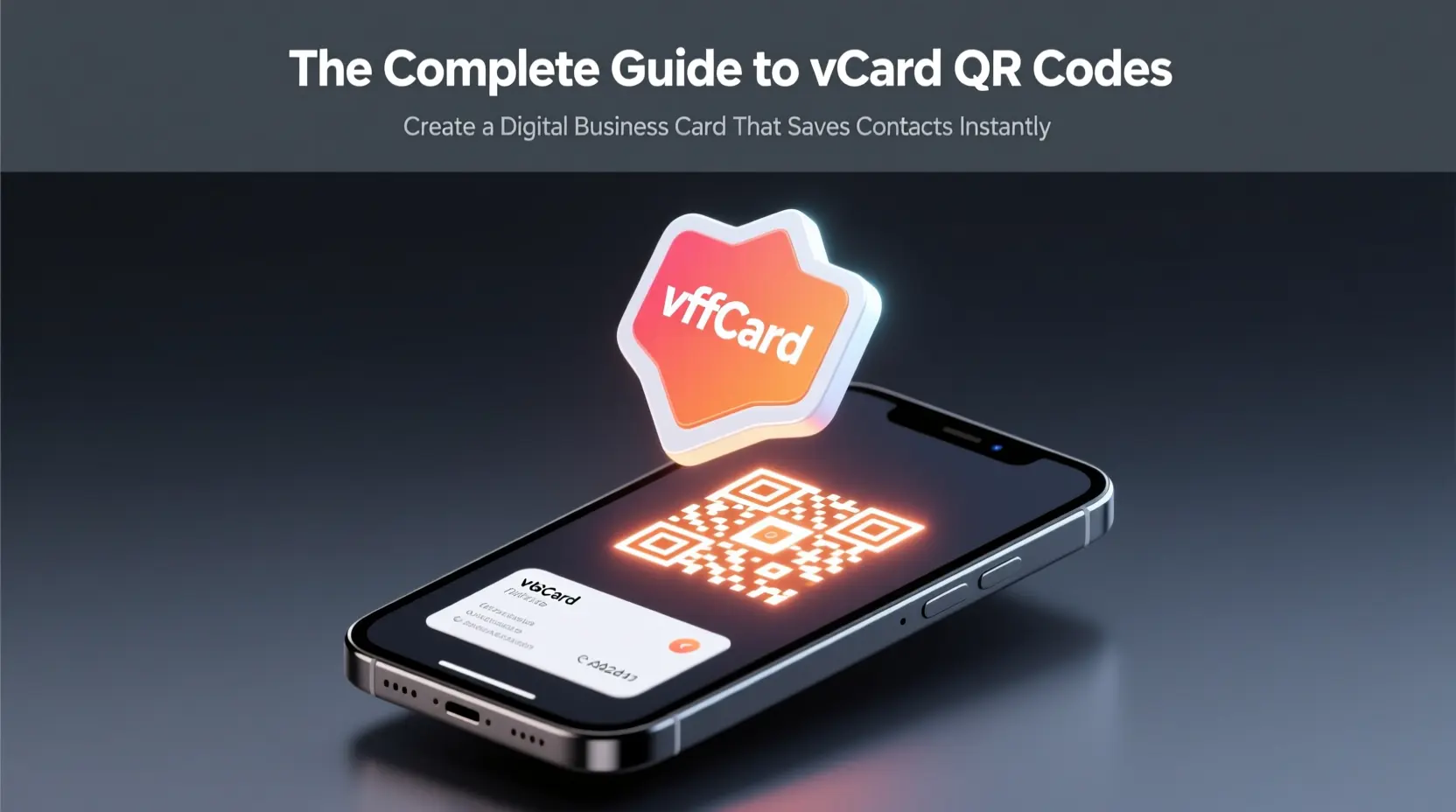The Complete Guide to vCard QR Codes: Create a Digital Business Card That Saves Contacts Instantly
A vCard QR code is more than a modern twist on the business card — it’s a privacy-respecting, error-proof, and instantly actionable way to share your professional identity.
When scanned, it prompts the user’s phone with:
“Add [Your Name] as a contact?”
With one tap, your full details — name, phone, email, job title, website, and LinkedIn — are saved directly to their address book. No typing. No typos. No paper waste.
At QRCodeAI.online, we make it easy to generate perfect vCard QR codes — free, with no sign-up, and 100% private.
This guide covers everything you need to know to use them effectively.
What Is a vCard QR Code?
A vCard QR code encodes contact information in the standardized vCard format (.vcf), recognized by iOS, Android, and all major email clients.
Unlike typing a phone number or sharing a link, it triggers a native device action — the “Save Contact” prompt — ensuring accuracy and speed.
✅ What It Includes
- Full name
- Phone number(s)
- Professional email
- Website or LinkedIn URL
- Job title & organization
- Photo (optional, but supported)
📲 Alt text for phone screenshot: "iPhone screen showing 'Add Alice Chen as a contact?' prompt after scanning a vCard QR code"
🔗 Related: How to Add a QR Code to Your Resume — Use vCard QR to make your resume stand out.
Why Use a vCard QR Code Instead of Plain Text?
| Method | User Experience | Accuracy | Privacy |
|---|---|---|---|
| vCard QR | One-tap save | ✅ 100% accurate | 🔒 No data sent to servers |
| Plain text QR | Manual copy/paste | ❌ Typos likely | 🔒 Safe, but error-prone |
| Email signature link | Click → open website → manual entry | ❌ High friction | 🌐 Often tracks clicks |
💡 Key Insight: Only vCard QR codes trigger the native “Save Contact” action. Encoding the same data as plain text will just display it — no automation.
🔗 Related: The Complete Guide to QR Code Formats — Learn why format matters.
Step-by-Step: Create Your vCard QR Code
1. Choose the Right Tool
Use a generator that supports true vCard format — not just text.
At QRCodeAI.online, select “Contact Card (vCard)” to ensure proper encoding.
2. Fill in Your Details
Enter:
- First & Last Name (required)
- Phone Number (include country code, e.g., +1)
- Email (professional address)
- Website (e.g., your LinkedIn or portfolio)
- Job Title & Company
- Photo (optional — must be small, ≤100KB PNG)
🛡️ Privacy Note: Your data is processed locally in your browser. Nothing is sent to servers — not even for analytics.
3. Customize for Branding (Optional)
- Color: Use your brand color (e.g.,
#ff6f48) for the dots - Logo: Add a small, centered logo (≤30% of code area)
- Corner Style: Rounded or circle modules for a modern look
🖼️ Alt text for design comparison: "Side-by-side: generic black-and-white vCard QR vs. branded version with #ff6f48 color and centered logo"
🔗 Related: The Ultimate Guide to QR Code Design — Best practices for scannable, beautiful QR codes.
Where to Use Your vCard QR Code
✅ Professional Settings
- Business cards (replace or supplement printed info)
- Email signatures (“Scan to save my contact”)
- LinkedIn banners or portfolio websites
- Conference name tags
✅ Personal & Community Use
- Wedding invitations (save couple’s contact for RSVPs)
- Parent-teacher directories (school events)
- Volunteer sign-ups (nonprofit events)
📌 Pro Tip: Add a micro-call-to-action:
“Scan to save my contact — no typing needed!”
🔗 Related: How Nonprofits Can Use QR Codes to Boost Donations — Use vCard QR for team directories.
Common Mistakes — And How to Avoid Them
| Mistake | Consequence | Fix |
|---|---|---|
| Encoding as plain text | Shows raw data, no “Save” prompt | Use vCard type, not “Plain Text” |
| Missing country code | Phone number fails on international devices | Always use +1 555 123 4567 format |
| Large photo file | Breaks scannability or fails to encode | Keep photo ≤100KB; use PNG with transparency |
| Low-contrast design | Fails on older phones or in sunlight | Test with our built-in scanner |
🔗 Related: How to Test Your QR Code Before Printing — Essential for professional use.
Privacy & Security: Why vCard QR Is Safer Than Alternatives
Many contact-sharing apps require:
- Account creation
- Access to your full contacts list
- Cloud storage of your data
In contrast, a static vCard QR code:
- 🔒 Contains only the data you choose to share
- 🌐 Never connects to external servers
- 📲 Works offline — no internet needed to save
It’s the only method that gives you full control over what’s shared — and when.
Bonus: Use vCard QR for Teams & Organizations
Create a master QR code for your department:
- List key contacts (Manager, Support, Billing)
- Include emergency numbers
- Print on office doors or handbooks
Or generate unique codes for each team member — all branded consistently.
🏢 Example:
“Scan to save our customer support team: Alice (Manager), Sam (Tech), Lee (Billing)”
Final Thought
In a world of digital noise, simplicity builds trust.
A vCard QR code does one thing — and does it perfectly:
It turns a moment of connection into a lasting professional relationship.
And with the right tool, creating one is faster than printing a business card.
✅ Ready to Create Your First vCard QR Code?
👉 Generate Your Free Digital Business Card Now
- ✅ Works on iPhone & Android
- ✅ Full customization with real-time preview
- ✅ Download as PNG or SVG
- ✅ 100% private — no data leaves your browser
No sign-up. No cost. Just instant, professional contact sharing.

